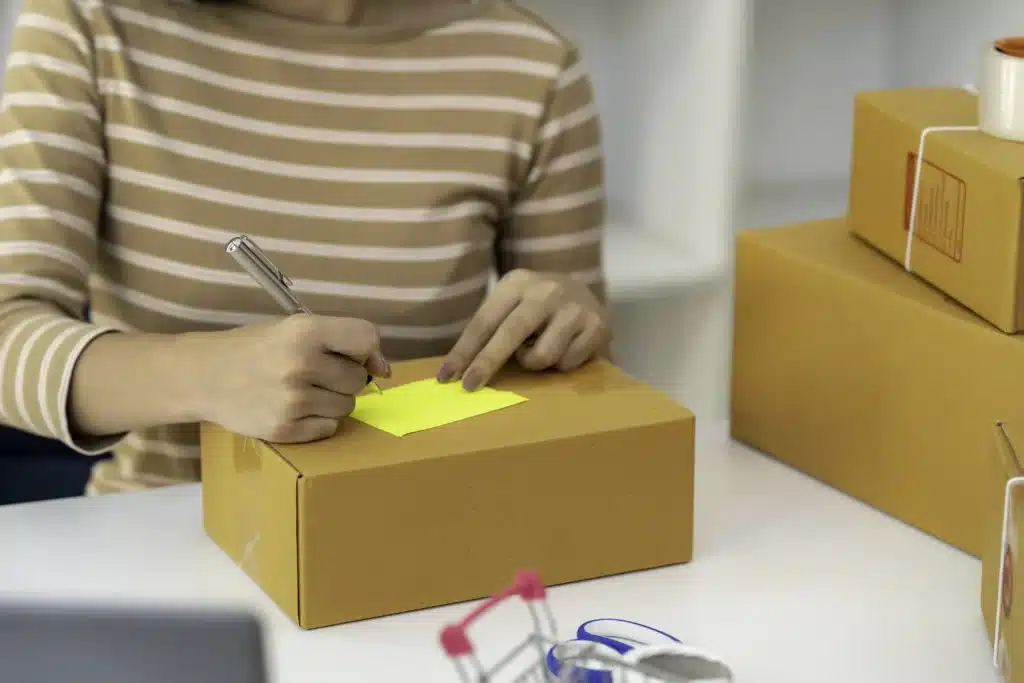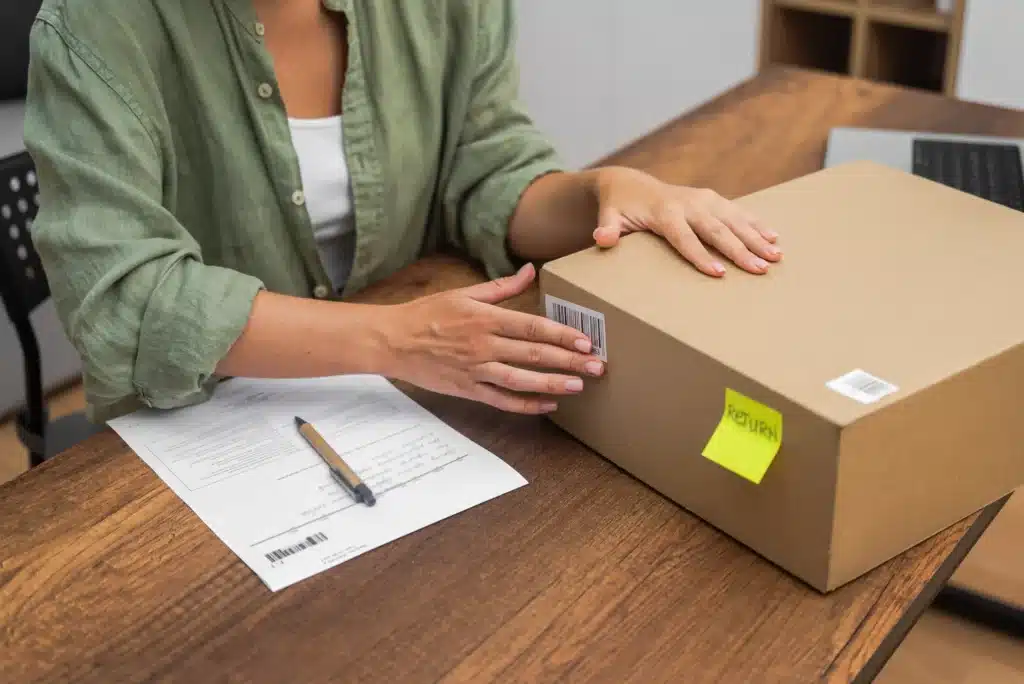Understanding the Importance of Labeling Boxes Effectively
Knowing how to label boxes for quick identification is one of the most practical yet overlooked parts of moving, storing, or organizing items. Whether relocating an office, storing seasonal items, or decluttering your home, effective labeling saves time, reduces stress, and prevents lost or damaged belongings.
At The Storage Place Singapore, our goal is to make your moving and storage experience as seamless as possible. We understand that organization begins before the boxes even reach storage, it starts with how you label them.
When you use a consistent labeling system, you instantly know what’s inside every box without opening it. This simple yet powerful technique ensures efficiency when packing, moving, and retrieving your belongings from storage.
Why Proper Box Labeling Matters

Proper labeling is not just about writing names on boxes; it’s about creating a clear information system that guides anyone, movers, office staff, or family members, to locate items effortlessly. Here’s why it matters:
- Saves Time: You can quickly identify what’s inside without rummaging through boxes.
- Reduces Damage Risk: Labels like “Fragile” or “This Side Up” alert handlers to take extra care.
- Improves Inventory Control: Businesses benefit from knowing where every document or piece of equipment is stored.
- Minimizes Stress: A clearly labeled move or storage unit ensures smoother unpacking and less confusion later.
- Professional Image: For companies, a structured labeling system demonstrates operational discipline.
A study conducted by logistics experts in Singapore found that businesses implementing systematic labeling during office moves reduced unpacking time by up to 45%. This is one reason our professional packing teams emphasize label design as part of our efficient packing strategies for office relocations (see our full guide here).
Step-by-Step Guide: How to Label Boxes for Quick Identification
Step 1: Gather the Right Labeling Materials
Choosing quality materials ensures your labels remain legible and durable, even in humid storage environments like Singapore’s climate.
Recommended materials:
- Permanent waterproof markers
- Adhesive or printed labels
- Colored packing tape for quick category identification
- QR codes or barcodes (optional for digital tracking)
- Label protectors or transparent tape for sealing
Tip: Avoid cheap paper stickers that peel off easily or markers that fade under moisture.
Step 2: Establish a Consistent Label Format
Consistency is key. Every box should follow the same information pattern. A recommended format includes:
| Label Component | Description | Example |
|---|---|---|
| Room/Category | Area or department name | “Office – HR Files” |
| Contents Summary | Short item description | “Employee Records 2023” |
| Handling Instructions | Fragile, Heavy, or This Side Up | “FRAGILE – Handle with Care” |
| Destination | Final location | “New Office Room 2A” |
| Box Number | For tracking | “Box 05 of 20” |
This structure ensures you never lose track of what’s inside, where it belongs, or how it should be handled.
Step 3: Implement a Color-Coded System
Color coding allows instant recognition without even reading the label. Use colored tape or stickers to identify categories:
- 🟦 Blue: Bedroom items
- 🟩 Green: Kitchen supplies
- 🟧 Orange: Living room electronics
- 🟥 Red: Fragile items
- 🟨 Yellow: Office documents or files
A simple glance at a color-coded box helps your team or movers know exactly where to place it, saving time during sorting or unloading.
Step 4: Label Multiple Sides for Visibility
Label at least two adjacent sides and the top of each box. This ensures visibility even when boxes are stacked or lined up against walls.
For long-term storage, label placement can make the difference between a 5-minute retrieval and a 30-minute search.
Step 5: Create a Master Inventory List
Every labeling system should connect to an inventory record. Maintain a master list, either in print or digital format, that links each box number to its contents and storage location.
Here’s a sample structure:
| Box No. | Category | Contents | Location | Notes |
|---|---|---|---|---|
| Box 01 | Kitchen | Plates, utensils | Storage Unit A1 | Fragile |
| Box 02 | Office | Reports, invoices | Shelf 2B | Barcode #223 |
This can be managed using Google Sheets, Airtable, or even dedicated inventory software. Many businesses in Singapore pair their labeling system with digital tracking to streamline audits and retrievals.
Advanced Labeling Techniques for Businesses and Offices
For corporate storage, traditional labels may not be enough. Businesses often require smart tracking systems for document archives, IT assets, or marketing materials.
1. Barcode Labeling
Assign each box a unique barcode linked to an online database. Scanning it instantly reveals the box’s contents, owner, and storage date. This is ideal for long-term storage management.
2. QR Code Integration
Generate QR codes that link to a digital inventory sheet. Anyone with a smartphone can scan the code to view detailed information, useful for office relocations or e-commerce warehousing.
3. RFID (Radio Frequency Identification)
For high-volume operations, RFID tags automatically track the movement of boxes in and out of storage, offering real-time inventory updates.
These innovations are part of The Storage Place SG’s modern approach to organized storage, blending traditional best practices with technology-driven efficiency.
Common Mistakes to Avoid When Labeling Boxes
Even with good intentions, labeling errors can cause disorganization. Avoid these common pitfalls:
- Using vague terms like “miscellaneous”, it makes retrieval harder.
- Labeling only the top, becomes invisible when stacked.
- Skipping fragile warnings, leads to preventable damage.
- Ignoring color consistency, creates confusion for teams.
- No inventory list, causes time wasted searching for items.
When labeling, clarity is your best ally. Each box should communicate exactly what’s inside and where it belongs.
Recommended Tools and Supplies
| Tool | Purpose | Recommendation |
|---|---|---|
| Permanent Marker (Black/Red) | Clear writing | Sharpie Industrial or Pilot Super Color |
| Adhesive Label Paper | Write or print durable labels | Avery WeatherProof Labels |
| Colored Tape Rolls | Color categorization | Scotch Expressions Tape |
| QR Code Generator | Digital tracking | QRCode Monkey / Canva QR |
| Clear Tape | Seal and protect labels | 3M Scotch Heavy-Duty |
Always store extra markers and label sheets in your moving kit so you can make changes on-site if needed.
Best Practices for Long-Term Storage Labels
When boxes are stored for months or years, you’ll want labels that endure. Here’s what we recommend:
- Use laminated labels or cover with transparent tape.
- Avoid placing labels on seams or tape, they can peel over time.
- Store a duplicate list of all box contents on your phone or cloud.
- Mark boxes with retrieval frequency tags such as “Frequent Use” or “Archive.”
This makes it simple to access what you need most without disturbing your entire storage layout.

Conclusion: Stay Organized with The Storage Place Singapore
Learning how to label boxes for quick identification is one of the smartest investments you can make for smoother moves and efficient storage. Clear, consistent, and color-coded labels transform chaos into order, ensuring that you can locate anything at a glance.
At The Storage Place Singapore, we provide more than just self-storage units; we offer complete packing, labeling, and moving solutions for homes, offices, and businesses. Our team helps you plan every step, from packing to labeling and organizing your unit for maximum space efficiency.
If you’re planning a move or simply need to declutter, let us help you store smarter. Explore our guide on efficient packing strategies for office relocation and see how our methods can simplify your storage experience today.
FAQs (Frequently Asked Questions)
What’s the best way to label boxes for moving?
Use a clear and uniform labeling format: room name, box number, and brief description of contents. Color-code by category for faster sorting.
How can I make sure my labels stay intact during transport?
Use waterproof markers and adhesive labels. Avoid paper stickers that can tear when exposed to moisture.
Should I label boxes before or after sealing them?
Label after sealing so you can ensure labels are visible on multiple sides.
What’s the advantage of using QR or barcode labels?
Digital labels make it easy to track and retrieve inventory using mobile apps — ideal for offices or large households.
Can The Storage Place SG help with packing and labeling?
Absolutely! Our team offers professional packing and labeling services to ensure every item is stored safely and systematically.
